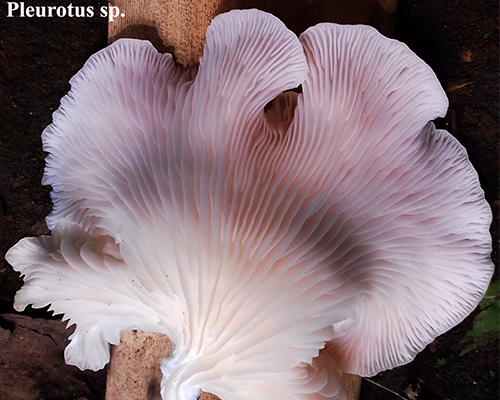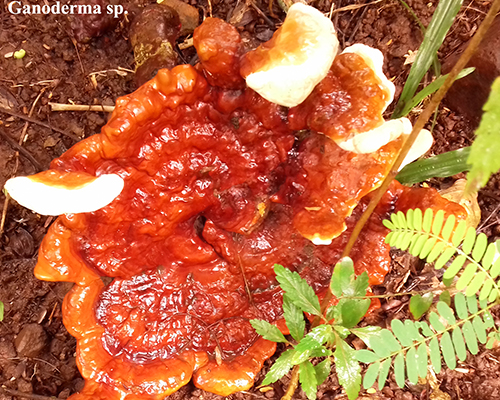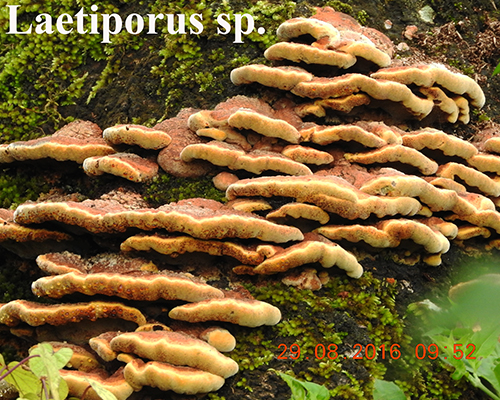Bioprospecting
Bioprospecting
Sustainable Communities
- Livelihood Support and Nutritional Security through Food Processing and Fortification
- Nutritional Security and Livelihood Support through Off-farm Livelihood initiatives
- Nutritional Security through Nutri-Gardens and Food Fortification
- Developing Pathardi in Palghar District into a Sustainable Village
- Canteen for Teens - Focusing on "Know, Grow and, Cook your own food" for Urban Youth
- Urban Farming - A Sustainable Approach for Urban Nutrition
Germplasm Bank of Coastal Mushrooms Duration: 2016 - Ongoing Sponsor: Department of Biotechnology, Government of India
After animals and plants, fungi are the third largest kingdom of eukaryotic organisms. It is estimated that this kingdom comprise of ~5.1 million species1. Of these, only 100,000 fungi are known worldwide. Among them, mushrooms constitute as many as 30,000 known species. In fact, mushrooms are a fascinating group of fungi and have been used throughout the world as both food and medicine for thousands of years. Several bioactive compounds of mushrooms show potential antioxidant, antimicrobial, anticancer and anti-inflammatory abilities. Of the 1500 species reported from India so far, interestingly, ~900 species including several new species in 133 genera were reported from the Western Ghats alone2, 3, 4, 5.
 Pleurotus sp.
Pleurotus sp. However, significant mycological explorations, as well as more long-term fungal studies are needed in the Western Ghats of Maharashtra where these specialized habitats are typically plant species-rich, and can also have a rich mycobiota. Mushrooms are rich in proteins, fibers, less in fats and good source of vitamins B and D. Furthermore, they provide important minerals such as selenium, copper and potassium. They are a prolific resource for drugs but very few studies have been carried out on pharmaceutical and neutraceutical potential of edible and medicinally valued mushrooms, moreover, very few mushrooms have been exploited for their food and medicinal potential. There are several mushrooms with possible benefits to mankind that are yet to be commercially cultivated and conserved.
To address the above issues TERI has received a grant from the Department of Biotechnology under the network program on prospecting of fungi for industrial projects.
 Ganoderma sp.
Ganoderma sp. The current phase of the project focuses on mushrooms from coastal regions of Maharashtra and Goa which include some parts of the Western Ghats. The principal aim is to collect mushrooms from the wild, preserve and characterize them, develop a herbarium, a digital library and isolate pure cultures of mycelia. The project also includes carrying out detailed morphological and biochemical characterization of selected species comprising of both edible and non-edible mushrooms and assess the neutraceutical and medicinal properties. The project also explores the domestication of few wild species for yearlong consumption. So far, 200 samples have been collected from Thane, Raigad, Sindhudurg and Ratnagiri districts of Maharashtra and 61 species have been identified. The sampling locations were the different types of forests or habitats such as deciduous forests (Manikgad), dry deciduous forests (Parsik hills), moist deciduous forests (Karnala Bird Sanctuary), deciduous forests with natural Shoals (Kanakeshwar, Amboli and Dapoli), tropical deciduous forest (Jawhar) sacred groves (Amboli), nature parks (Maharashtra Nature Park) and man-made plantations (CBD Belapur).
 Laetiporus sp.
Laetiporus sp. The digital library on mushrooms of coastal regions of Maharashtra thus has been prepared. Out of 61 species, 41 species were analysed for their neutraceutical and pharmaceutical potential. The future plan of action is to collect and isolate many more mushroom samples from various locations and analyse them for the above mentioned properties. To ensure long term preservation of local mushroom biodiversity, data documentation and digitalization of work is in progress and soon there will be networking with mushroom end users and stake holders, growers, research institutes and enterprises.
References:
[1] Blackwell M (2011) The Fungi: 1,2,3...5.1 million species? American Journal of Botany, 98(3): 426–438
[2] Manjula B (1983) A revised list of the agaricoid and boletoid basidiomycetes from India and Nepal. In: Proceedings of Indian Academy of Sciences (Plant Science), 92(2): 81–213
[3] Natarajan K, Narayanan K, Ravindran C, Kumaresan V (2005) Biodiversity of agarics from Nilgiri Biosphere Reserve, Western Ghats, India. Current Science, 88 (12): 1890–1893
